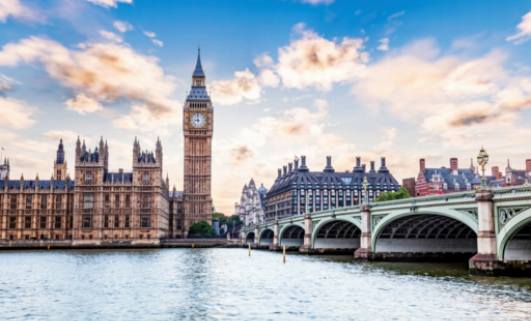Nestled in the historical borough of Greenwich in London, the Royal Observatory stands as a testament to the groundbreaking advancements made in the realms of astronomy, navigation, and timekeeping. Its rich history and legacy as the birthplace of modern timekeeping have left an indelible mark on global scientific endeavors. The architectural marvel of the observatory, combined with the innovation and expertise of the astronomers and scientists who have worked within its walls, continue to captivate and inspire visitors from around the world.

Influence of the Royal Observatory on Global Timekeeping
The Royal Observatory in Greenwich holds a significant place in the history of global timekeeping. This institution played a crucial role in the development and standardization of timekeeping practices, which have had a lasting impact on societies around the world. Through the establishment of the Greenwich Mean Time (GMT) and the creation of the Prime Meridian, the Royal Observatory has shaped how time is measured and coordinated on a global scale. Its influence on global timekeeping continues to be felt today, as GMT serves as the basis for Coordinated Universal Time (UTC), the standard for timekeeping used by countries worldwide.
Innovations in Astronomy and Navigation at the Royal Observatory
The Royal Observatory in Greenwich has been at the forefront of innovations in astronomy and navigation since its establishment in 16One of the most significant contributions of the Royal Observatory is the development of accurate timekeeping methods, which were essential for celestial navigation and the determination of longitude at sea. The introduction of the Marine Chronometer by John Harrison in the 18th century revolutionized navigation by allowing ships to accurately determine their position at sea.
Additionally, the Royal Observatory played a crucial role in advancing the field of astronomy. Astronomers at the observatory made important discoveries, such as the measurement of the Earth's shape and the calculation of the speed of light. The observatory also provided a platform for astronomers to observe the night sky with precision instruments, leading to groundbreaking discoveries in the field of stellar and planetary astronomy.
Furthermore, the Royal Observatory's meridian line, which runs through the center of the site, became the basis for the Prime Meridian of the world in 18This line, marked by a brass strip in the floor of the Meridian Building, serves as the reference point for Greenwich Mean Time (GMT) and has had a significant impact on global timekeeping and navigation.
Overall, the innovations in astronomy and navigation at the Royal Observatory have had a lasting impact on the fields of science and navigation. Through its contributions to accurate timekeeping, advancements in astronomy, and the establishment of the Prime Meridian, the Royal Observatory in Greenwich has solidified its place as a pioneer in modern timekeeping and navigation.
Architectural Features and Design of the Royal Observatory
The Royal Observatory in Greenwich is a remarkable example of architectural design that combines both practical functionality and aesthetic beauty. Designed by renowned architect Christopher Wren in the late 17th century, the observatory’s striking octagonal shape and elegant baroque style make it a standout landmark in the heart of Greenwich Park.
The building’s design reflects its primary function as a center for astronomical observation and research. The octagonal shape of the main building was specifically chosen to provide unobstructed views of the night sky from multiple vantage points. The rooftop terrace and large windows allow astronomers to observe celestial phenomena with precision and clarity.
One of the most distinctive architectural features of the Royal Observatory is the iconic Time Ball, which was installed in 18This mechanical device was used to signal the time to ships in the nearby River Thames, allowing them to accurately set their chronometers before embarking on long voyages. The Time Ball remains a symbol of the observatory’s role in the development of global timekeeping and navigation.
The interior of the Royal Observatory is equally impressive, with its grand staircase, ornate details, and historic telescopes on display. Visitors can explore the various rooms and exhibits that highlight the history of astronomy and the important discoveries made at the observatory over the centuries.
Overall, the architectural features and design of the Royal Observatory in Greenwich reflect its importance as a pioneering center of scientific research and discovery. Its timeless beauty and historical significance continue to attract visitors from around the world who are eager to learn more about the fascinating world of astronomy and navigation.
Famous Astronomers and Scientists Associated with the Royal Observatory
The Royal Observatory in Greenwich has been home to a number of famous astronomers and scientists throughout its long and prestigious history. One of the most well-known figures associated with the Observatory is Sir Christopher Wren, the renowned architect who designed the original building in the late 17th century. Wren's innovative design incorporated several important features that would later become standard in observatory architecture.
Another notable figure associated with the Royal Observatory is John Flamsteed, the first Astronomer Royal. Flamsteed was responsible for creating the first accurate star catalog, which laid the foundation for modern astronomy. His work at the Observatory helped to establish Greenwich as the center of global timekeeping.
In the 18th century, Nevil Maskelyne became Astronomer Royal and continued to make important contributions to astronomy and navigation. Maskelyne developed the method of determining longitude at sea using lunar distances, which revolutionized navigation and made sea travel safer and more efficient.
In more recent years, the Royal Observatory has been home to renowned scientists such as Sir George Airy and Sir Frank Dyson, who made significant contributions to our understanding of the universe and our place within it. Their work at the Observatory has helped to shape modern astronomy and navigation techniques.
Overall, the Royal Observatory in Greenwich has been a hub of scientific discovery and innovation, attracting some of the brightest minds in the field of astronomy. The contributions of these famous astronomers and scientists have helped to solidify the Observatory's legacy as the birthplace of modern timekeeping.
